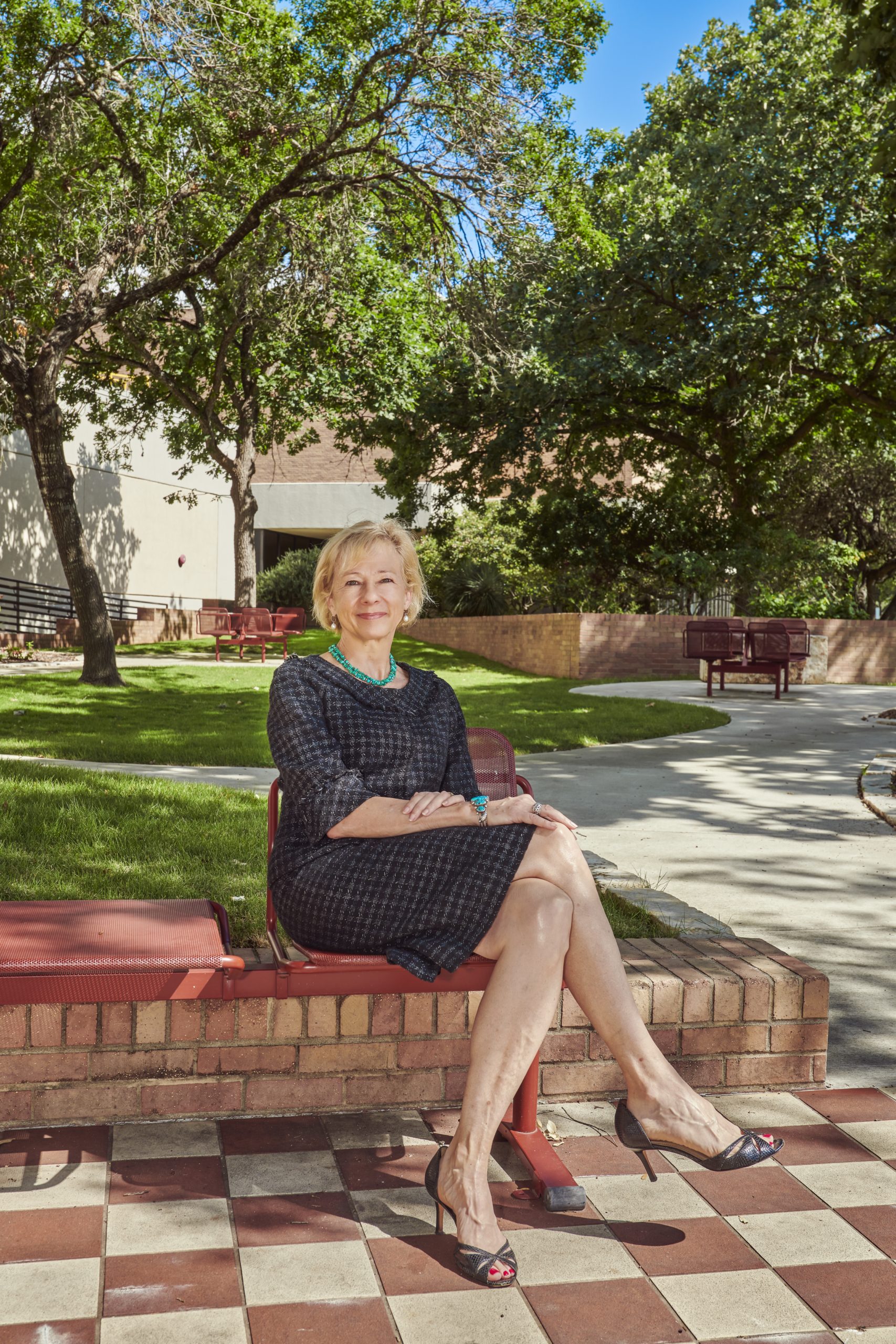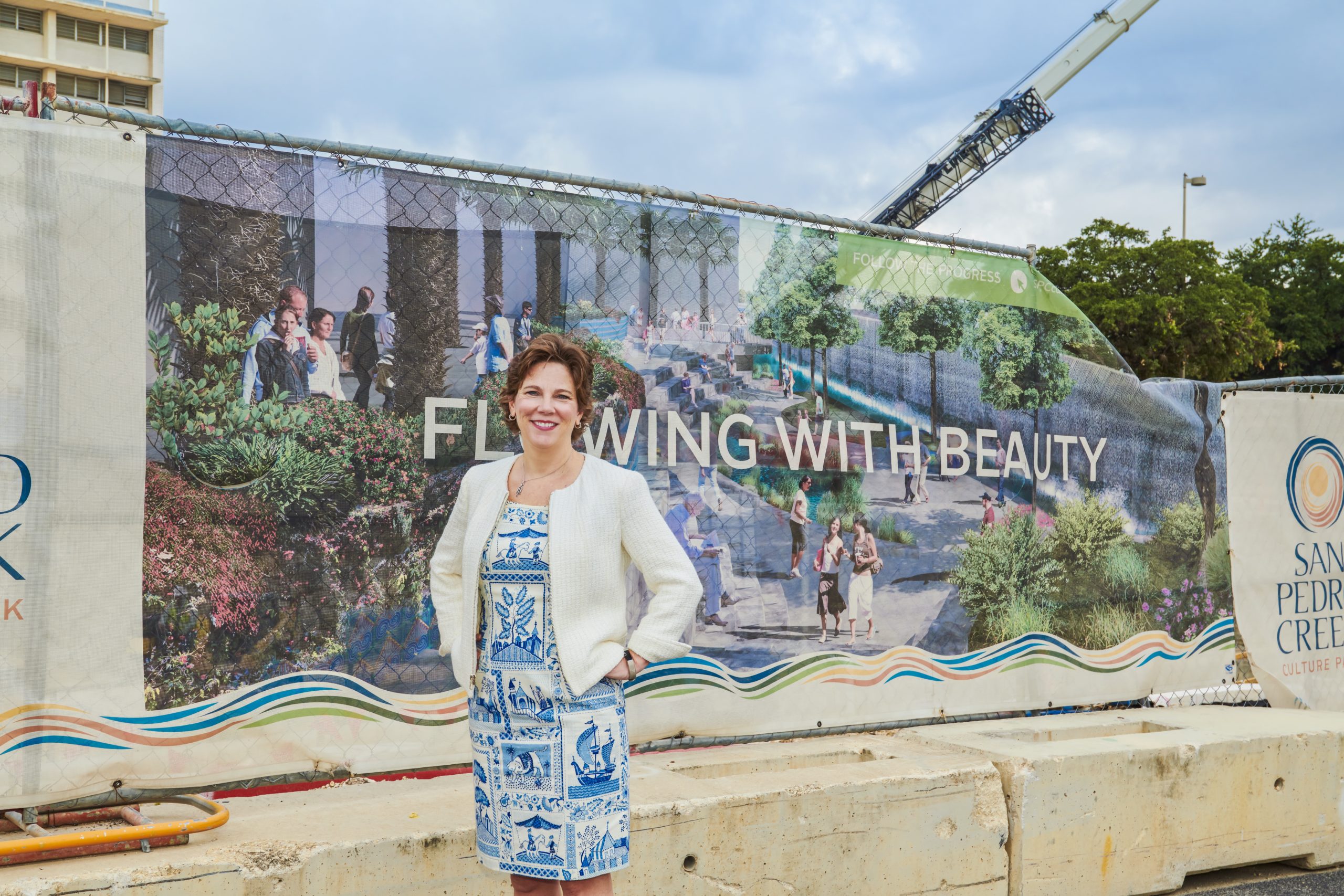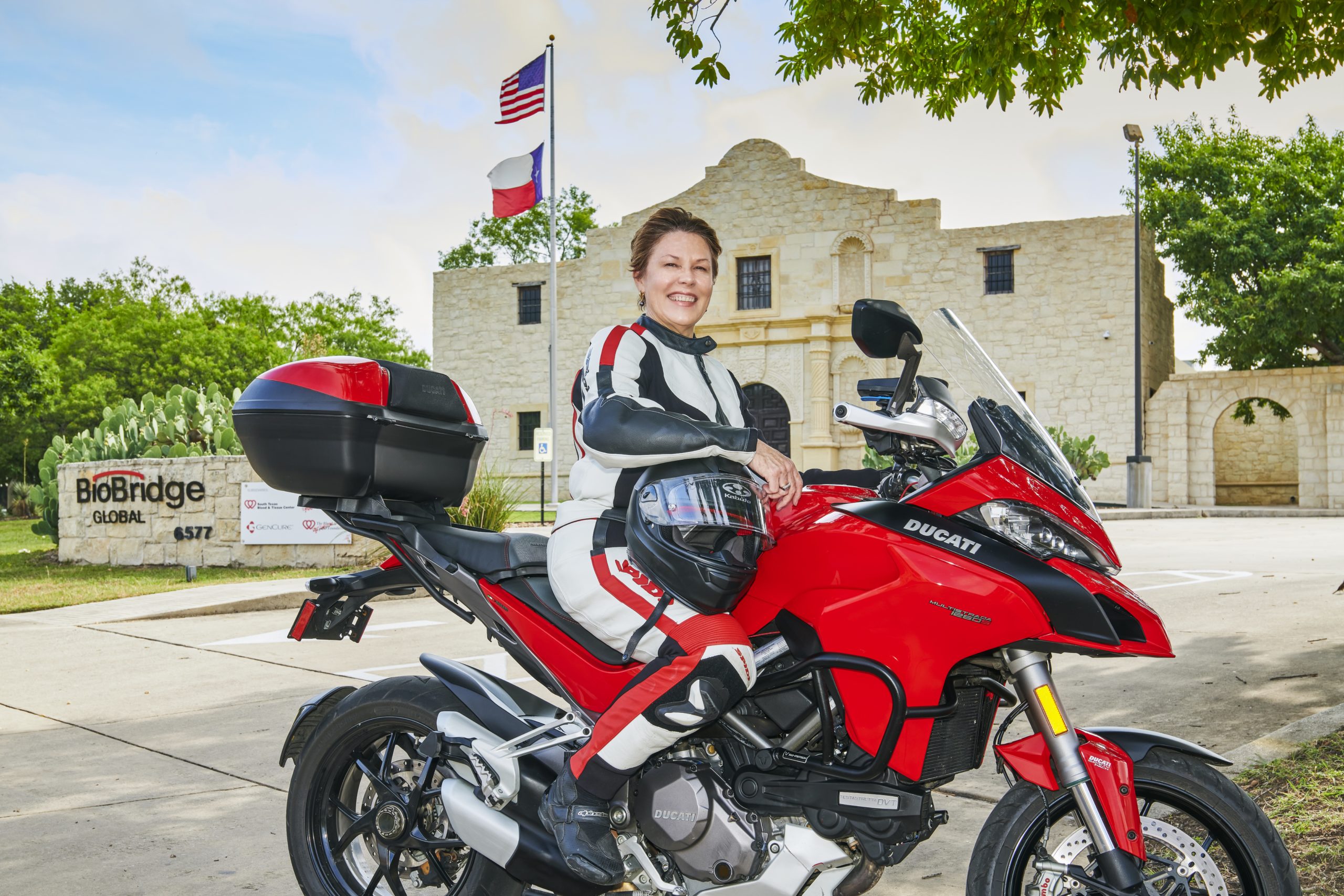There isn’t a single American today who doesn’t feel like the world has gone a little crazy. 2020 has been quite a roller coaster, and it’s only half over. With racial tensions heating up, social unrest, protests rampant in our communities, and COVID-19 threatening the population, it seems we’ve lost control of life as we knew it. There are some who feel that shaking things up a bit will realign our belief in what is important, and there are others who just want to return what they deem as “normal.” San Antonio has always been a tight-knit community, a big city with a small-town character. From the time of the Alamo, the members of this community have been committed to building a better tomorrow for everyone, and the current COVID-19 pandemic is no exception. There are many heroes on the front lines battling this horrible virus, but the three women that you are about to meet stand out on a level far above the rest. They are brilliant, forward-thinking warriors, and they are launching San Antonio to the forefront of city leadership, making the rest of the country sit up and take notice. These ladies are powerful forces, each with an amazing team of colleagues that have helped to shape a successful response to the pandemic and forging a path to come out even stronger on the other side.

Dr. Ruth Berggren
Professor of Medicine and Director of the Center for Medical Humanities and Ethics
at UT Health San Antonio
“The Importance of Being Present, Visible and Consistent”
It is safe to say that Dr. Ruth Berggren has spent her life working to control infectious diseases and helping communities put measures in place to improve public health. Both of her parents were medical missionaries, and she even spent part of her childhood in Haiti where she was exposed to a world where medical care was limited. Her parents strived to help create a system that focused on preventive care and health education. Following in their footsteps, Dr. Berggren received her medical training at Harvard and ultimately found herself at Tulane University. She was in New Orleans when Hurricane Katrina struck, devastating the city and its resources, and putting those already at risk in dire circumstances.
Speaking of her experience, she recalls that many physicians evacuated for safety, “leaving vulnerable patients on their own.” She was treating patients with HIV, tuberculosis and Hepatitis C: people who had long suffered from poverty, lack of care, and the stigma of these infectious diseases. Without residents, lab support, running water or electricity, Dr. Berggren stayed with nurses and patients until they were all evacuated six days later. She considers her experience to be profoundly transformative, but nevertheless, struggled to navigate the chaos that ensued. With insurmountable barriers and political obstacles impeding desperately needed change in New Orleans, she and her husband, Dr. Tyler Curiel, packed up their children and their careers to accept positions with The University of Texas Health Science Center at San Antonio (now referred to as UT Health San Antonio).
Dr. Berggren and her colleagues have always expected, and mentally prepared for, a pandemic, but the timing of COVID-19 came as a surprise. She says, “In this globalized world, we always thought it would be an influenza outbreak.” Her initial introduction to the virus came early this year while she was teaching a Global Health class: they were informed about the COVID-19 outbreak in Wuhan. In February, she received a call from the District Attorney’s office alerting her and her colleagues about the cruise ship evacuees being transported to Lackland Air Force Base. When someone exposed to those evacuees was arrested and sent to the Bexar County jail, she was requested to be a consultant on how to handle the incarcerated population. Epidemic history shows that congregate settings, like jails, nursing homes and schools, are most susceptible.
“Jails are not like prisons. With shorter sentences, people come in and they go out. It is a highly fluid situation and there have been challenges trying to separate COVID-positive and COVID-negative inmates,” Berggren says. An amazing team mobilized quickly to help test and segregate the nearly 3,000 inmates to prevent an overwhelming outbreak. Her leadership efforts were instrumental in effecting changes and drafting policies by San Antonio and Bexar County as they learned more about the virus. She is proud of the way San Antonio has handled the pandemic and credits city and county leaders with paying attention and making decisions early on that are grounded in evidence and science. She knows that we will see surges in virus cases this year, but she feels strongly that they can be managed with individual behavior change, citing need for the public’s help in wearing masks, staying 6 feet apart, washing hands frequently and avoiding larger gatherings.
As the Director of the Center for Medical Humanities and Ethics, she takes her mission seriously to teach and instill ethics and professionalism to medical students and health professionals while nurturing empathy and humanitarian values. She is a true, and seasoned, role model for our city and her ongoing contributions in shaping San Antonio’s response to this pandemic will no doubt help to create a foundation of planning for future pandemics.

Dr. Colleen Bridger
San Antonio Assistant City Manager and Interim Director of the San Antonio Metro Health Department
“Simultaneously Responding and Planning a Recovery”
With the arrival of the first cruise ship evacuees, the city of San Antonio had to spring into action earlier than the rest of the country. This posed not only a huge challenge, but also a unique opportunity for our city to become a leader and an example in how to respond, and ultimately recover, from this and future pandemics and disasters. Originally infected individuals were divided up among three different military installations here in the U.S. The evacuees sent to San Antonio came from two different cruise ships, and we also received American citizens who happened to be in the Wuhan province of China when the virus began to spread there. They were required to spend 14 days in quarantine as they were closely monitored and tested in an attempt to contain the spread of COVID-19.
Assistant City Manager, Dr. Colleen Bridger, was thrust into action when it became her task to not only track the cases in Bexar County, but also devise a plan to respond to the pandemic while simultaneously looking ahead with a plan of recovery. It was just two weeks after the evacuees arrived that San Antonio had its first community transmission case of the virus, but it was very hard, in the beginning, to track the numbers, because so many infected individuals are asymptomatic. One of the first projects undertaken by the city was to randomly test a sample of 500 households and track the contacts of those testing positive.
Another innovative program that was borne out of the need to educate the media asking questions about the city’s response to the pandemic and the public’s interest in tracking the virus in our community was the COVID-19 dashboard ( www.covid19. sanantonio.gov). On this site, anyone can track the most current data relating to confirmed COVID-19 cases and the data is broken down by race, ethnicity, and geographical area. It has been essential in freeing up city resources to focus on other program implementations while allowing those seeking information to do their own research among data that is updated constantly.
However, Dr. Bridger’s most important task was to design a $195 million Recovery & Resiliency Plan in response to the pandemic including how the stay-at-home orders had and would affect the city’s economy. Built upon four pillars necessary in helping individuals and local businesses recover economically, this plan was put into effect at the beginning of July and encompassed the following provisions:
- Workforce Development – a $75 million project that offers short term training for certifications for furloughed workers during the pandemic. It allows displaced workers to apply for specialized training and weekly stipends while they go to school and fnd a new job.
- Housing Security – a $55 million program that helps people pay their rent and mortgages while trying to prevent evictions and debt. The program also connects community members in need with resources like SNAP, WIC, and TANF.
- Small Business Recovery – sets aside $38.1 million for grants to small businesses employing 20 people or less. These make up over 50% of the businesses in San Antonio. Working with economic development organizations throughout the city, this plan aims to help small businesses with fnancial planning and recovery advice as we move through the restrictions, and the city is allowed to slowly open up again.
- Digital Inclusion – offers $27 million toward improving technology options throughout the city. This will allow new fber and cable wiring in over 50 communities underserved by technology so that students can stay connected during stay-at-home orders as we move into an uncertain future for education. The plan will also provide infrastructures to school districts that provide digital learning devices to needy students.
Dr. Bridger helped to design this far-reaching program in conjunction with city council members and county commissioners. The plan strives to “improve the economic health of the city by improving access to education, a living wage, home security, and business survival.” It has been well received and lauded by city leaders as progressive and inclusive and will most definitely create a template for future city leaders as new challenges arise impacting our entire community.
She has been dedicated and versatile since she first arrived in San Antonio in late 2016 to become the Director of San Antonio s Metro Health Department and has fearlessly stepped up to face every challenge this city has presented. Dr. Bridger acted as the interim Assistant City Manager when Sheryl Sculley was transitioning into retirement, eventually settling into her position as the Assistant City Manager. However, now she is seeing her San Antonio career come full circle. Dr. Bridger was recently appointed to take over the role as acting Director of Metro Health with the resignation of Dr. Dawn Emerick. She will continue to fulfill her duties as Assistant City Manager and oversee her current departments, but will also step up to aid in the programs within Metro Health until a permanent director can be found.

Elizabeth Waltman
SVP with BioBridge global and COO of South Texas Blood & Tissue Center.
“Leading the Country in How We Use Convalescent Plasma to Treat the Virus”
Elizabeth Waltman coincidentally found herself at the beginning of March attending a national conference for blood bank CEOs during the outbreak of the pandemic here in the U.S.. The conversations began to shift, and the CEOs speculated about what would happen to the blood supply in this country if people couldn’t get out to donate blood during stay-at-home orders. Since the conference was being held in Washington D.C., the CEOs had the full attention of the political aides as they inquired about the stay-at-home orders being implemented around the country.
This realization that something big was about to go down prompted Waltman to rally the San Antonio city leaders as soon as she returned, and put together a brainstorming session with the mayor and the city managers. The question was, “If stay-at- home orders ground the mobile blood collection events, how will the blood bank manage to keep up with demand during the pandemic, especially if the daily need for blood increases?”
What resulted from this meeting was a news conference that spotlighted the mayor donating blood himself, and announcing a 3-day blood drive at the Alamodome with socially distant donor stations in order to adhere to the new CDC guidelines. The drive at the Alamodome brought in around 400 units of blood per day and was considered a success, but the South Texas Blood & Tissue Center routinely needs to see 500 donors every day in order to keep up with the demand in, and around, our community. Alarmingly, once the quarantine was put into effect, that number dropped by 30%. This forced Waltman and her incredible staff to get creative and act quickly.
The first change they implemented was requiring donors to schedule an appointment instead of just showing up at a donation center. This allowed staff to control the social distancing and impress upon donors how important it was to show up for their scheduled appointments. Normally, the “show rate” before the pandemic was 60-65%, but they found that during the pandemic, the community wanted to get involved and do their civic duty, and the “show rate” increased to 80-85%. This was wonderful, but then brought on a staffing crisis, as the donation centers were staffed according to the numbers, and they found themselves unable to accommodate all the donors at the donor rooms.
Again, Waltman and her team had to pivot quickly. She says, “People wanted to be a part of a community engagement to stand with one another.” They began arranging larger community-style blood drives at churches and hotel ball- rooms, with all CDC guidelines for social distancing enforced at all times. In fact, the plan was so successful, that they were able to meet the need for blood, and not a single employee at BioBridge, the organization that oversees the blood bank, tested positive during that time.
As the virus spread and more cases were reported, attention shifted to research showing that convalescent plasma had the ability to drastically improve a COVID-19 patient’s recovery time. Convalescent plasma contains antibodies to the virus that causes COVID-19, and it is derived from patients who have recovered from the virus. It may provide passive immunity and healing properties to certain patients, and it is currently being used by hospitals and doctors treating COVID-19 infected patients across the country.
South Texas Blood & Tissue was one of the first blood centers in the U.S. to collect and provide convalescent plasma to hospitals because of access to specialized antibody testing provided by QualTex Laboratories, sister subsidiary of BioBridge Global. Once a patient has recovered from the virus and has been symptom-free for 14 days, he or she may donate their plasma to help others recover.
Waltman beams with pride when speaking about this revolutionary and life-changing breakthrough, and she states, “Every once in a while, we get to see how what we do positively impacts people.”
While the research into the use of convalescent plasma is still in its early phases, the results have been astonishing. It should give every San Antonian a sense of pride to know that it was our city that got there first and continues to lead the way, changing and growing to meet the needs of our community and others across the country. Waltman states emphatically that it is her outstanding team that has met this challenge with success beyond anything she could have imagined. However, there are still many obstacles to tackle. Encouraging people to get out and donate, that we all need to become “stewards” of the blood supply in our own community, is the most important message she can leave us with.
BY MEREDITH KAY
PHOTOGRAPHY BY JASON ROBERTS









0 Comments